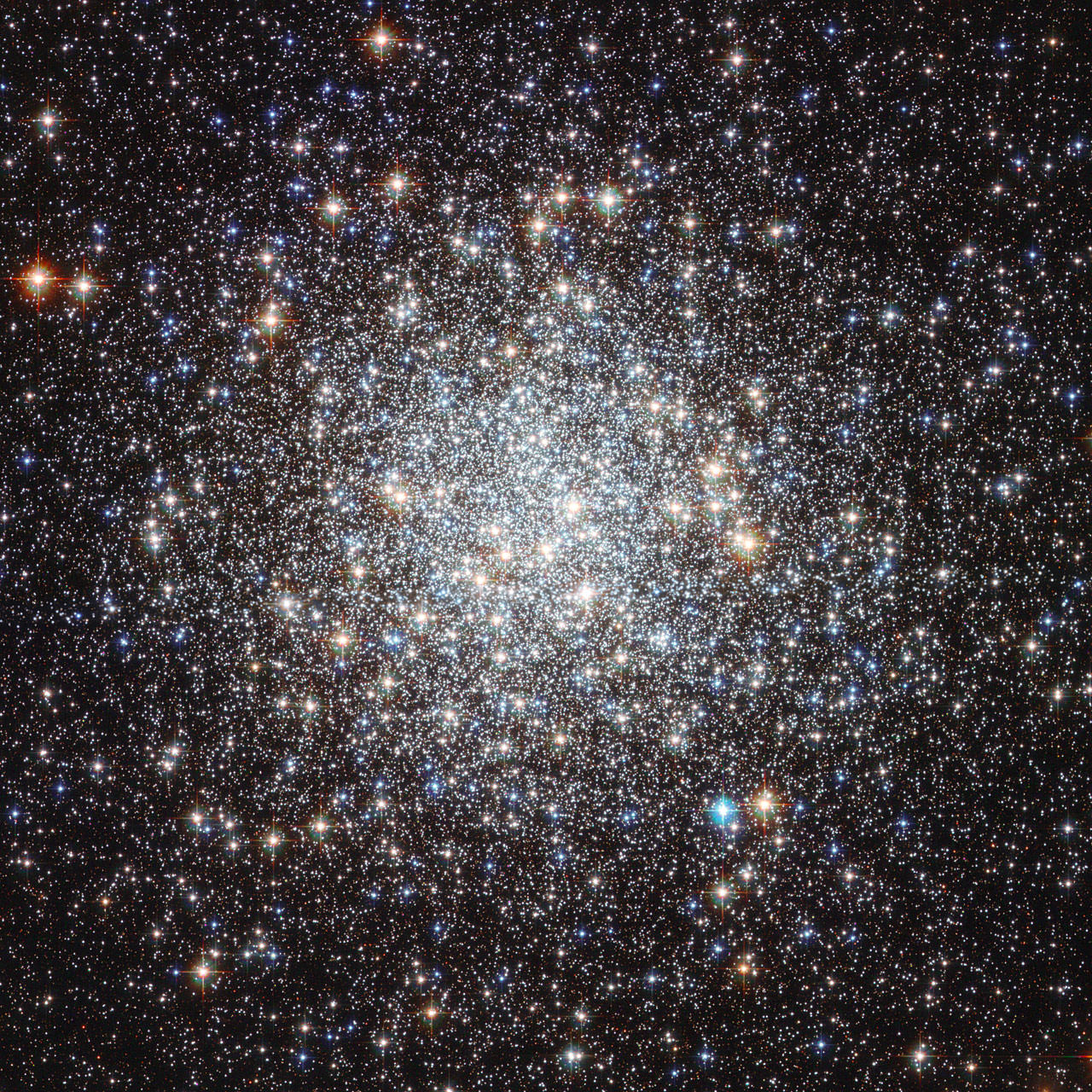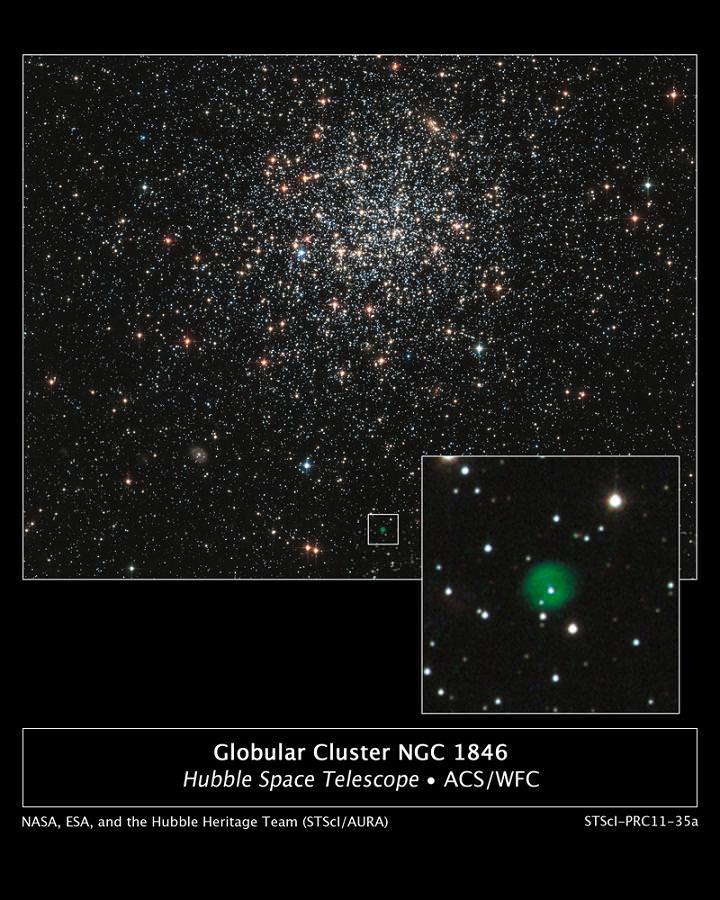[/caption]
About 160,000 light years away in the direction of southern constellation Doradus, sits a globular cluster. It’s not a new target for the Hubble Space Telescope, but it has had a lot to say for itself over the last twelve years. It’s actually part of the Large Magellanic Cloud, but it’s no ordinary ball of stars. When it comes to age, this particular region is mighty complex…
In a 34 minute exposure taken almost a half dozen years ago, the Hubble snapped both life and death combined in an area where all stars were once assumed to be the same age. Globular clusters, as we know, are spherical collections of stars bound by gravity which orbit the halo of many galaxies. At one time, astronomers assumed their member stars were all the same age – forming into their own groups at around the same time the parent galaxy formed. But now, evidence points toward these balls of stars as having their own agenda – and may have evolved independently over the course of several hundreds of million years. What’s more, we’re beginning to learn that globular cluster formation may differ from galaxy to galaxy, too. Why? Chances are they may have encountered additional molecular clouds during their travels which may have triggered another round of star formation.
“An increasing number of photometric observations of multiple stellar populations in Galactic globular clusters is seriously challenging the paradigm of GCs hosting single, simple stellar populations.” says Giampaolo Piotto of the University of Padova, Italy. “These multiple populations manifest themselves in a split of different evolutionary sequences as observed in the cluster color-magnitude diagrams. Multiple stellar populations have been identified in Galactic and Magellanic Cloud clusters.”
However, it’s not the individual stars which make this Hubble image such a curiosity, it’s the revelation of a planetary nebula. This means a huge disparity in the member star’s ages…. one of up to 300 million years. Is it possible that the shell and remains of this dead star is a line-of-sight phenomenon, or is it truly a cluster member?
“We report on Hubble Space Telescope/ACS photometry of the rich intermediate-age star cluster NGC 1846 in the Large Magellanic Cloud, which clearly reveals the presence of a double main-sequence turn-off in this object. Despite this, the main-sequence, subgiant branch and red giant branch are all narrow and well defined, and the red clump is compact.” says A. D. Mackey and P. Broby Nielsen. ” We examine the spatial distribution of turn-off stars and demonstrate that all belong to NGC 1846 rather than to any field star population. In addition, the spatial distributions of the two sets of turn-off stars may exhibit different central concentrations and some asymmetries. By fitting isochrones, we show that the properties of the colour–magnitude diagram can be explained if there are two stellar populations of equivalent metal abundance in NGC 1846, differing in age by around 300 million years.”
So what’s wrong with the picture? Apparently nothing. The findings have been studied and studied again for errors and even “contamination” by field stars in relation to NGC1846’s main sequence turn off. It’s simply a bit of a cosmic riddle just waiting for an explanation.
“We propose that the observed properties of NGC 1846 can be explained if this object originated via the tidal capture of two star clusters formed separately in a star cluster group in a single giant molecular cloud.” concludes Mackey and Nielson. “This scenario accounts naturally for the age difference and uniform metallicity of the two member populations, as well as the differences in their spatial distributions.”
Original Story Source: NASA’s Hubble Finds Stellar Life and Death in a Globular Cluster. For Further Reading: A double main-sequence turn-off in the rich star cluster NGC 1846 in the Large Magellanic Cloud, Population Parameters of Intermediate-Age Star Clusters in the Large Magellanic Cloud. I. NGC 1846 and its Wide Main-Sequence Turnoff and Multiple stellar populations in three rich Large Magellanic Cloud star clusters.


